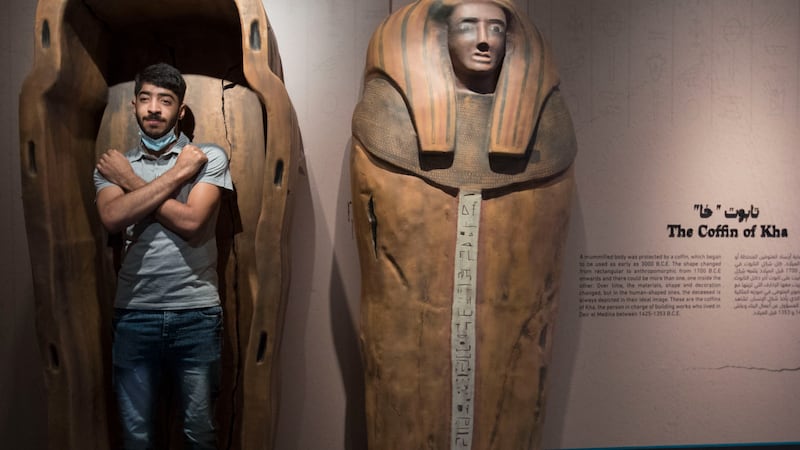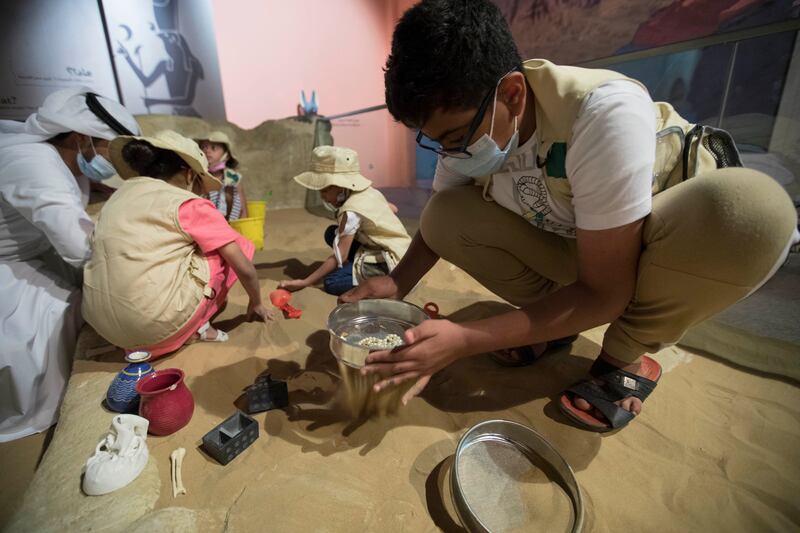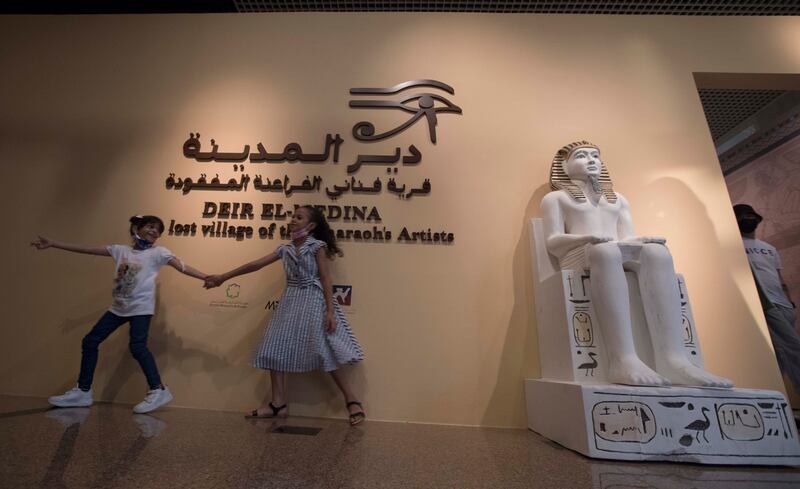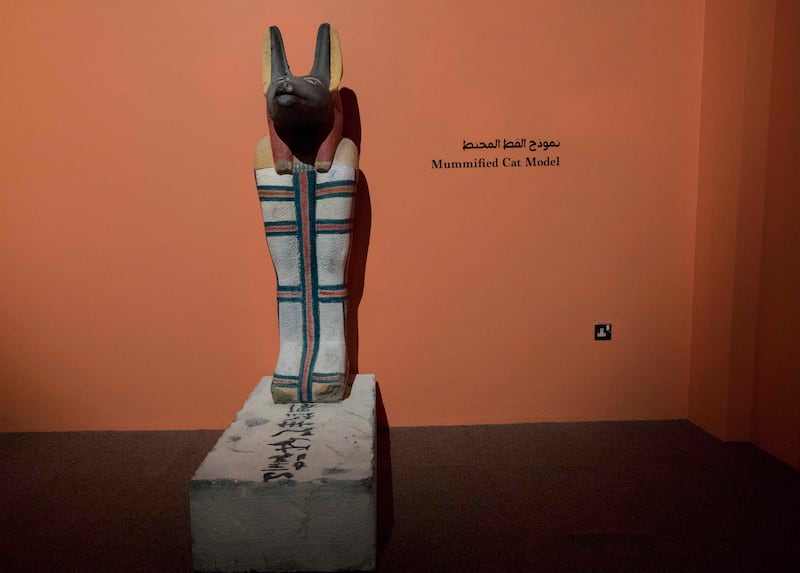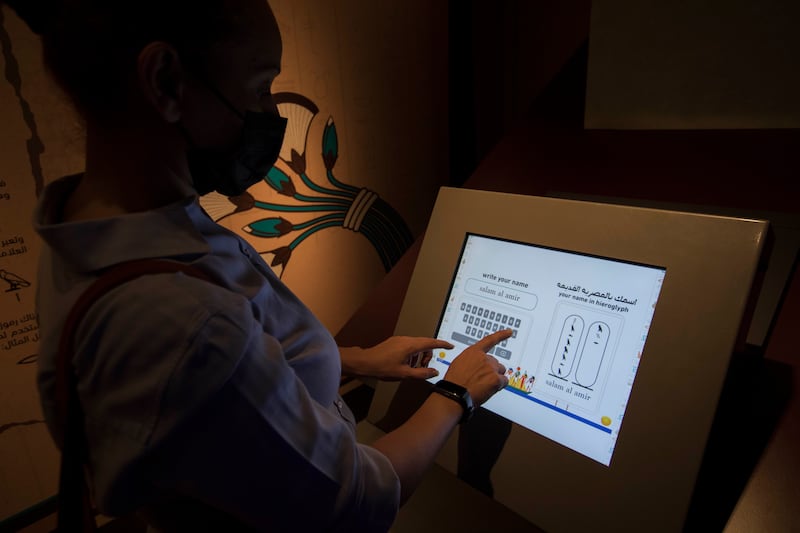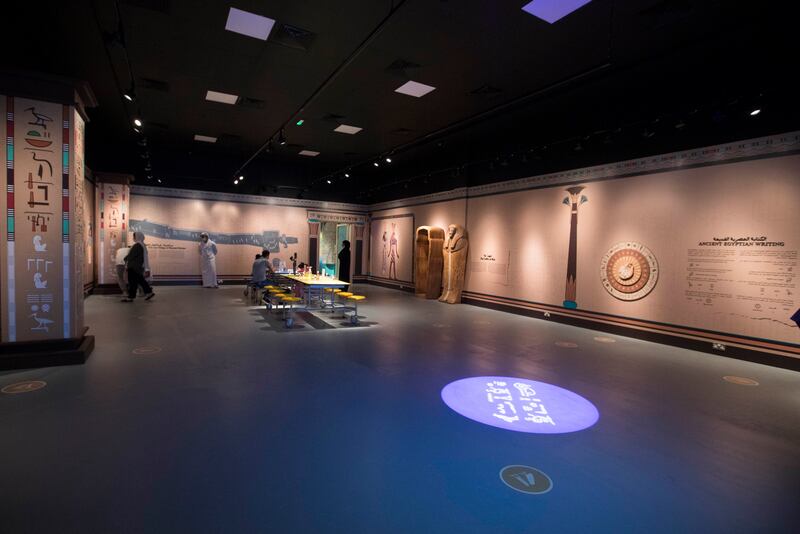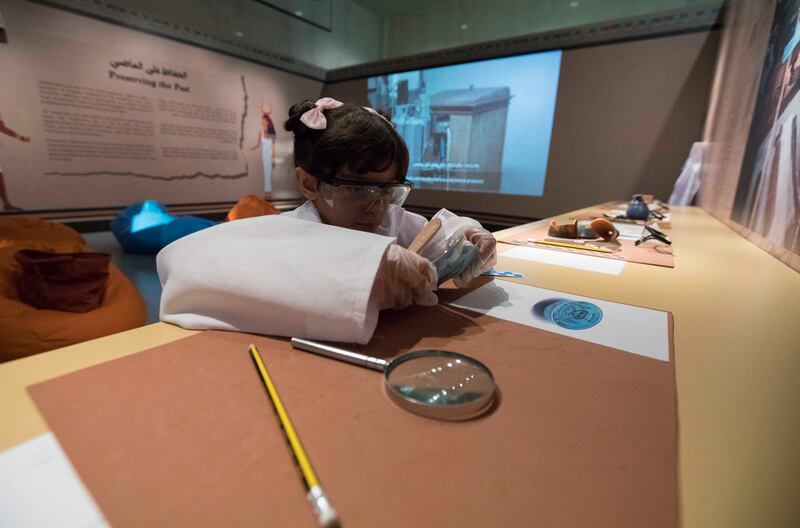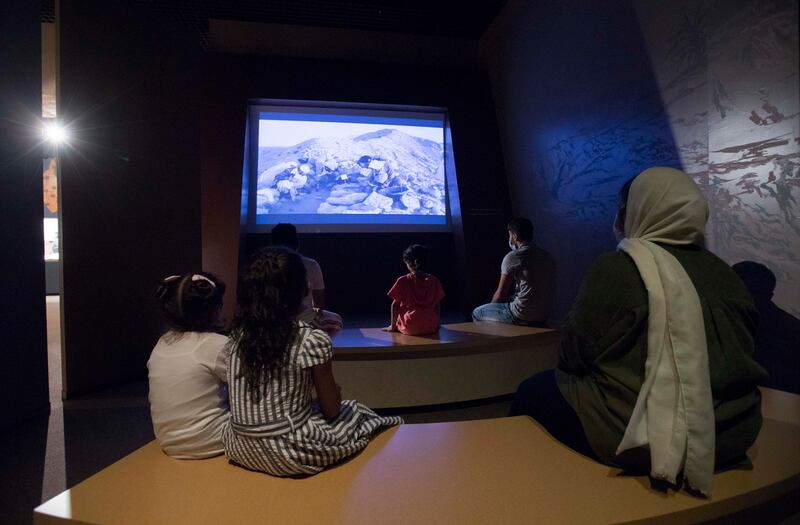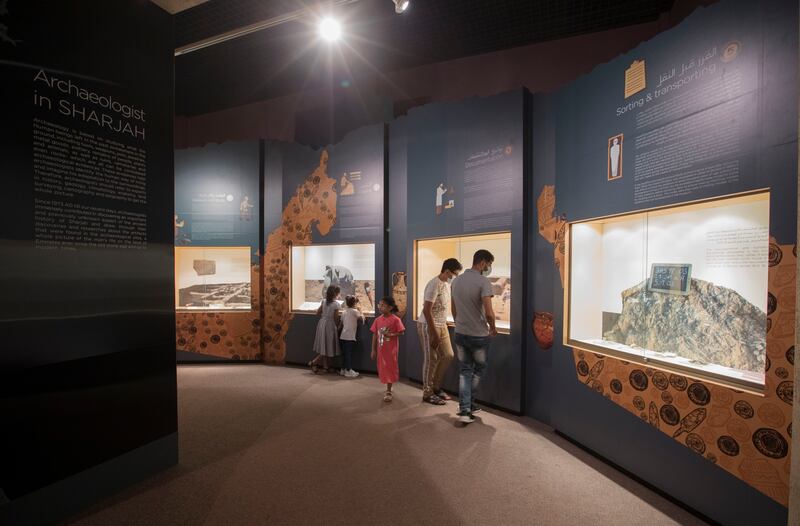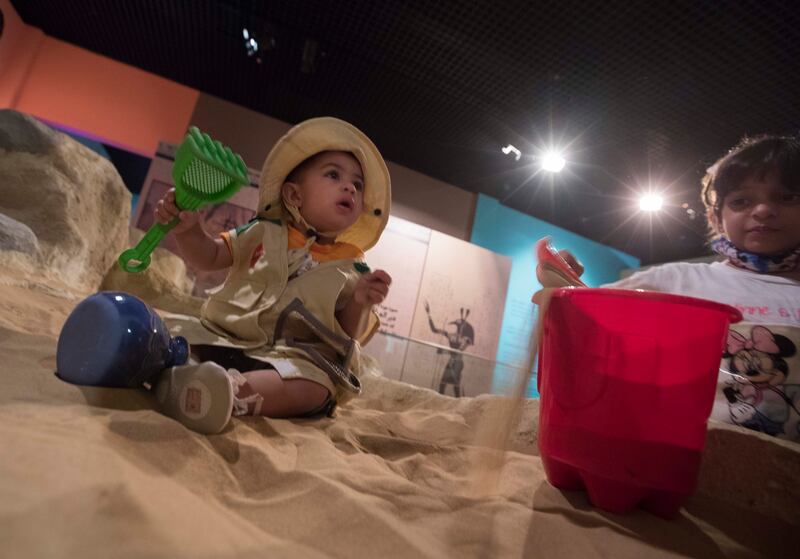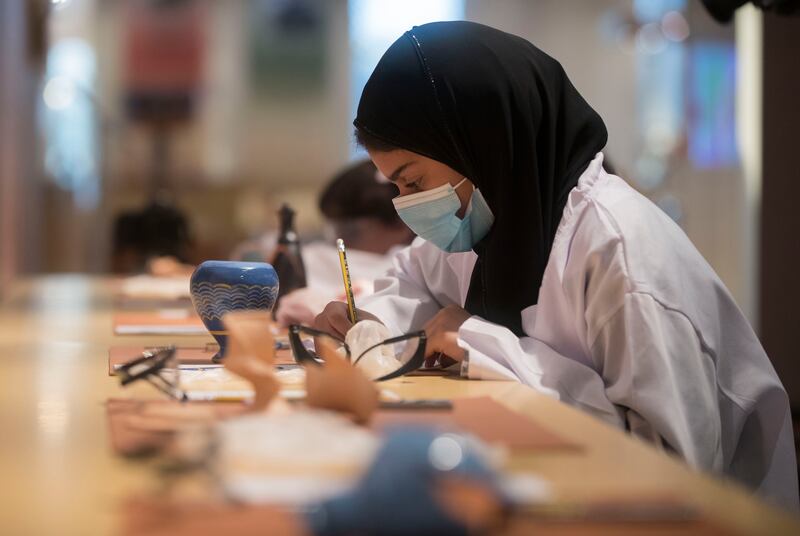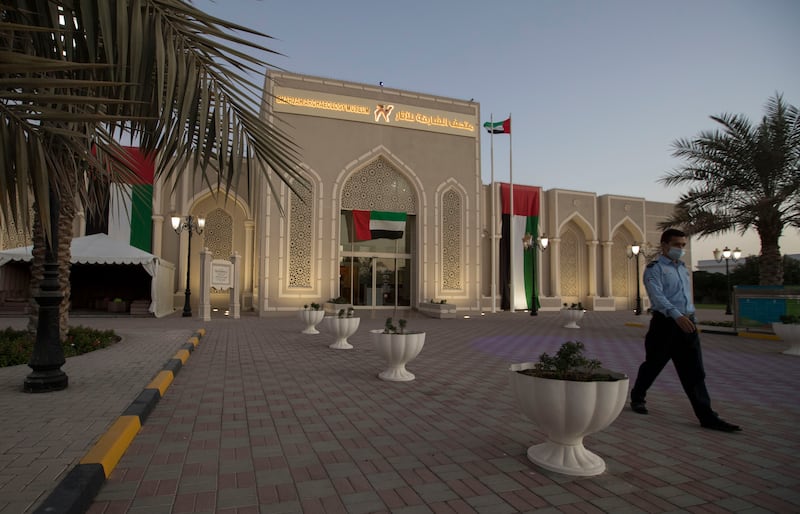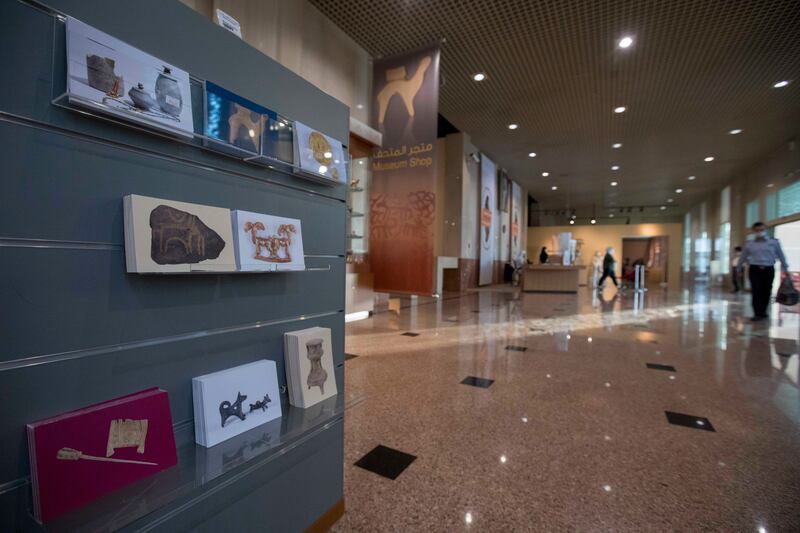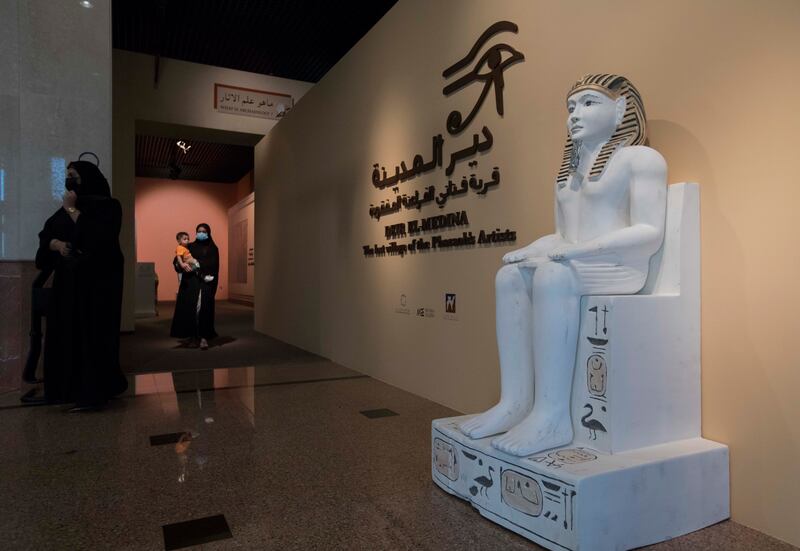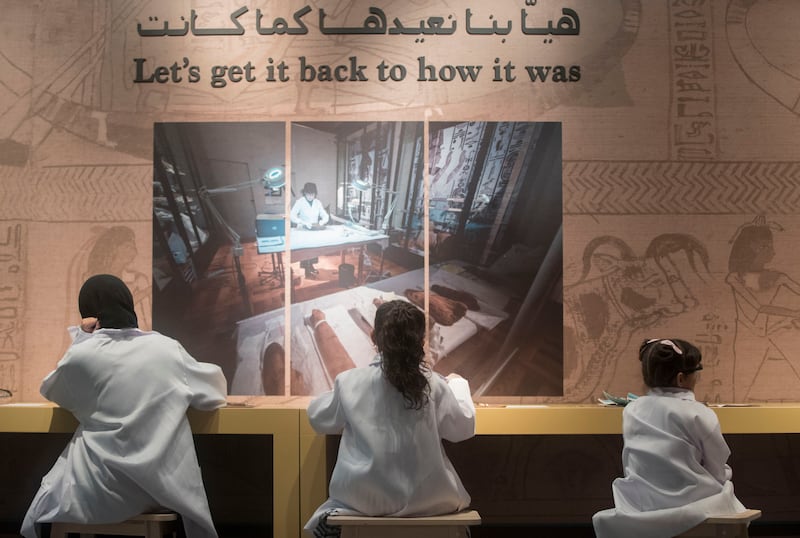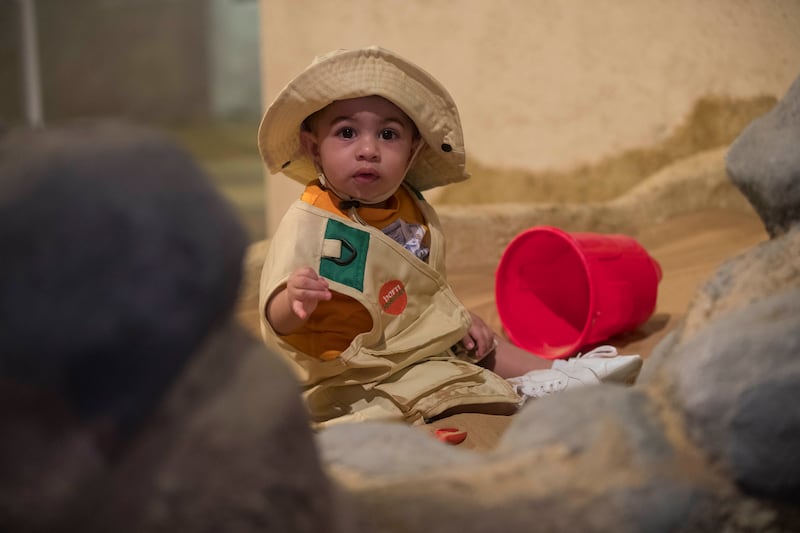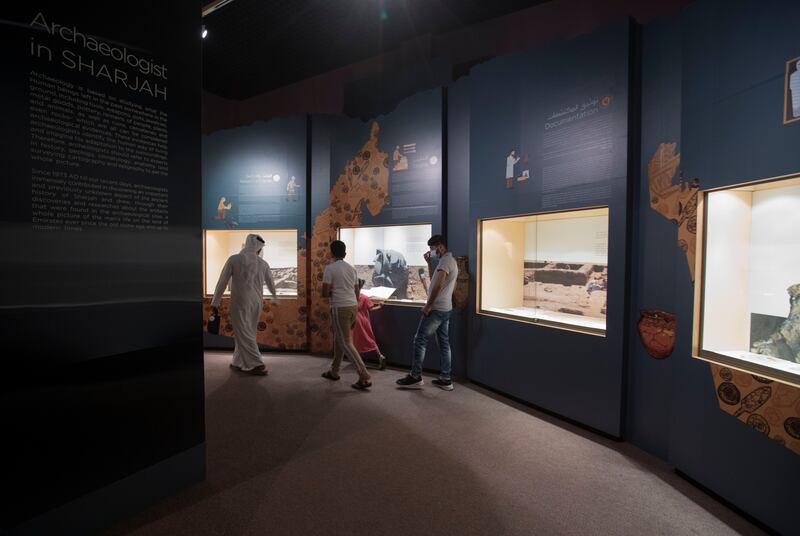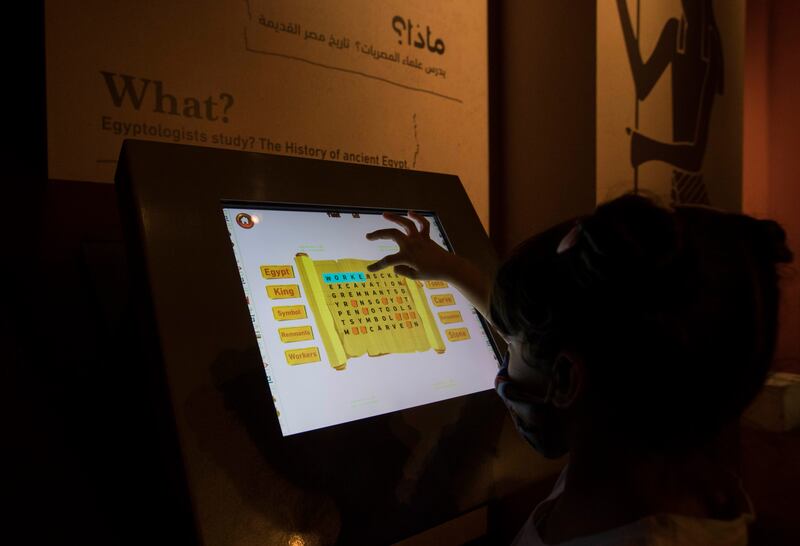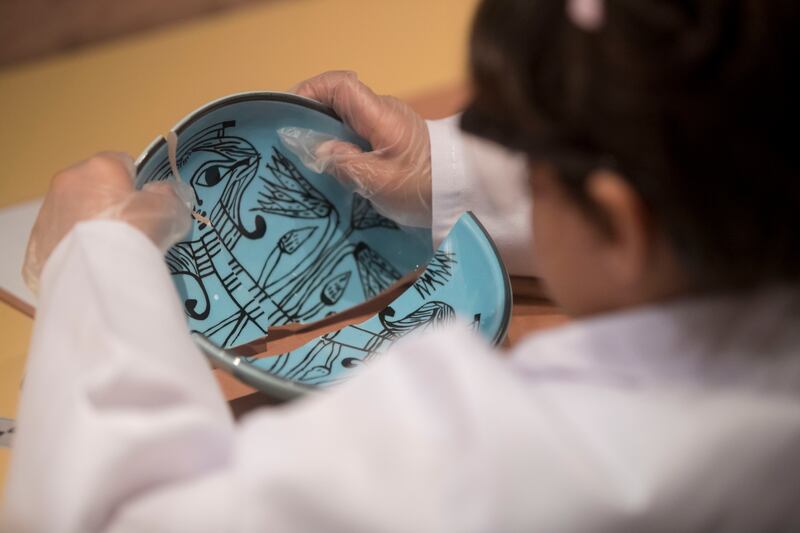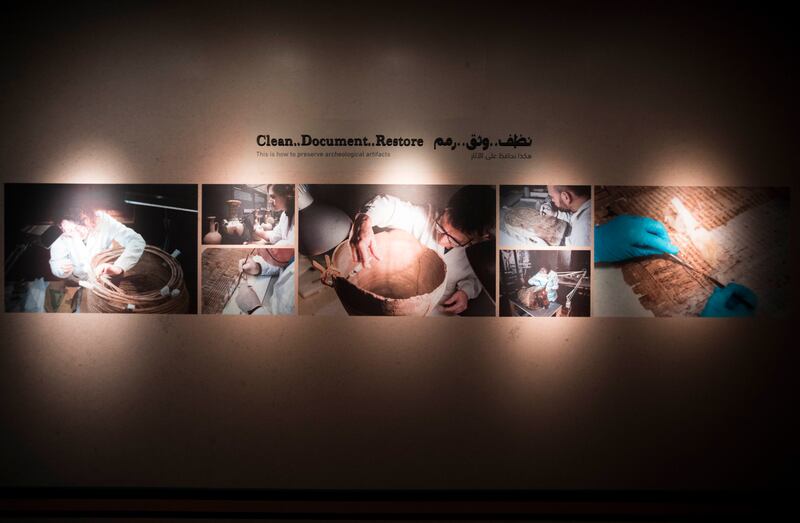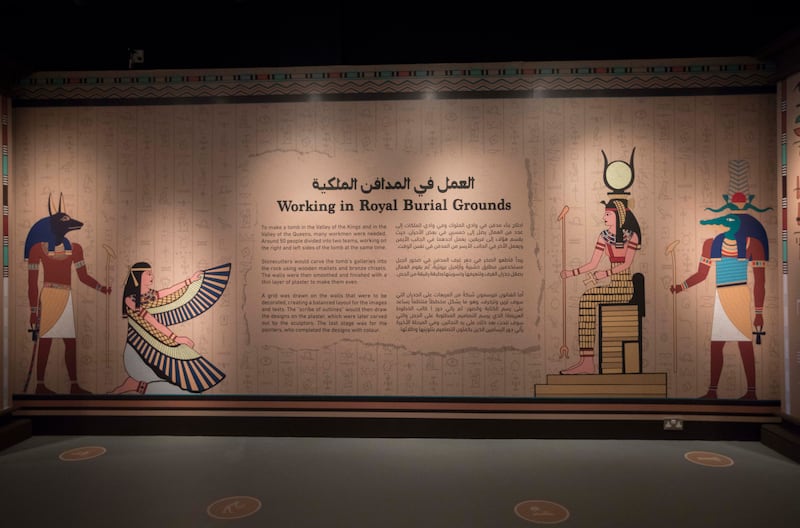Sharjah is hosting an interactive exhibition for children and families who want to learn more about pyramids, pharaohs, and life in ancient Egypt.
Organised by Sharjah Museums Authority in partnership with Egyptian Museum in Turin, Italy, the exhibition does not have any artefacts but it tells about major archaeological discoveries through workshops, hands-on activities, and touchscreen games.
The focus is on the discovery of the 3,400-year-old Deir El-Madinah village, home to the artisans and craftsmen who built and decorated the royal tombs in the nearby Valley of the Kings and Valley of the Queens.
It also tells visitors about the builders, artists, and painters who worked on Egyptian pharaohs’ tombs in 1,500BC.
“We are proud to organise this first-of-its-kind children's exhibition. It helps our young audience to explore the rich ancient Egyptian history and learn about archaeology,” said Manal Ataya, director general of SMA.
Children visiting the exhibition dressed up as pharaohs, wrote Arabic and English words in hieroglyphic — the writing on Egyptian monuments — and dug out findings in a small replica of an excavation site.
Short movies were played on large screens about the Deir El-Madinah village, the excavation missions that led to its discovery, and methods of restoring and preserving artefacts.
Inside the exhibition of the lost ancient Egyptian village of Deir El Medina
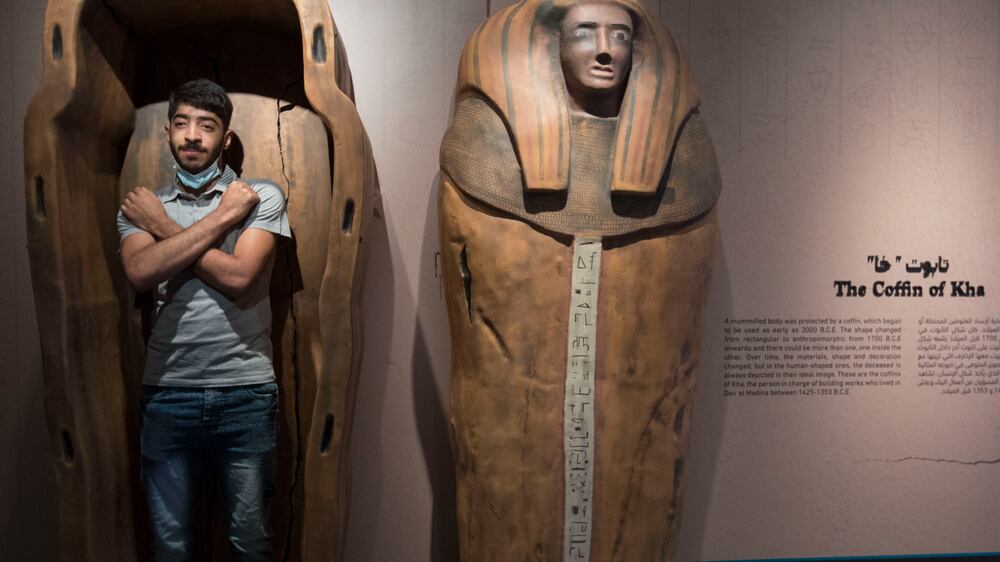
Children used mock-up excavation tools and were introduced to techniques used by archaeologists.
“I knew a little about ancient Egypt from movies like The Mummy, but now I know how they decorated their huge buildings and how they lived, it’s amazing,” Feryal Elbanna, 10, said.
“We study ancient civilisations and their important landmarks but we are not taught how these were discovered. I thought they have always been there.”
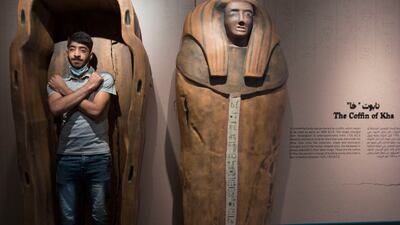
Roudha Zamani, 16, was fascinated with activities that focused on restoring artefacts. “I know about pharaohs and that Prophet Yousef [Joseph] lived during their time and I saw their pyramids on TV and the big statues with animal heads they made,” the Emirati pupil said.
She said she enjoyed restoring objects the most. “In a previous visit to the museum, I was taught to restore a jar and took it home but one of my siblings broke it which made me very sad,” she said.
Salim Yousef, 10, from the UAE, enjoyed the excavation activity and is excited to tell his friends and classmates about the exhibition.
“I want all my friends to come. I learnt much and had fun at the same time,” he said.
“I dug out some pearls, jewellery, jars, and other objects.”
Emirati Ali Ghanim Roubari, 16, was impressed by the exhibition and hopes to see more of such events as it helps children learn about archaeology.
“In a simple and fun way, this helps us to learn complicated subjects, not only about the civilisation itself but also about the science of archaeology,” he said.
“We wouldn’t have learnt it the same had it been taught to us the traditional way.”
Ms Ataya of the SMA said such an initiative can help children learn about archaeology.
“We created this immersive interactive environment to engage with children and help them to appreciate the experience and understand it better.”
Christian Greco, director of the Egyptian Museum, said: “The exhibition allows children and their families to remotely visit one of the most iconic sections of the Egyptian Museum’s collection.
“Thanks to videos and interactive activities, pupils can learn about the ancient Egyptian costumes and about archaeologists’ tools.”
The exhibition runs until August 31, 2022.
